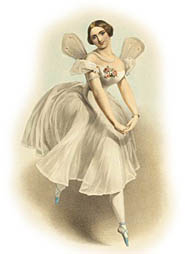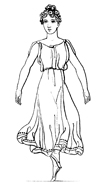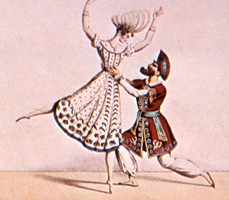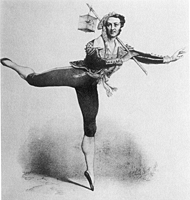
Early 19th Century Ballet

Early 19th Century Ballet
The first four decades of the 19th century represent a vital period in the history of ballet. During those years
important aspects of Baroque dance were preserved; the content of the ballet class as we know it today was
established; and dancers were trained and prepared for the technical challenges ushered in by the two most
important productions of the Romantic ballet era—La Sylphide (Paris, 1832) and Giselle (Paris, 1841).
Pierre Gardel, balletmaster at the Paris Opéra from 1787 to 1827, successfully maintained the ballet enterprise through
the tumultuous years of the French revolution and its aftermath. By 1799, the ballet was officially recognized
as a separate but vital entity at the Opéra. Thus, as in the preceding century, most dancers in the 19th century
continued to regard Paris as the locus of superior dance training, performances, and productions.

Ballets continued to be viewed as danced dramas, the term "ballet-pantomime" replacing the earlier term, "ballet
d'action." Rehearsal scores, répétiteurs, contained detailed information for the mimed gestures and expressions,
allied closely to the musical notes and phrases in the score. Dancing mostly occurred in extended divertissements,
often associated with celebratory scenes. Pas de deux, pas de trois, pas de cinq, etc. were indicated in the
score but without details of steps. A local balletmaster, having obtained the score, could devise his own
choreography of a well-known ballet, perhaps based on his memory of a Paris production, while maintaining the
integrity of the ballet by conforming to the details of the storyline.
Following this tradition, August Bournonville, using a newly commissioned score, rechoreograhed Filippo Taglioni's
ballet La Sylphide for the Royal Danish Ballet in 1836, a version which remains a staple of the company's
repertory. The RDB also has retained a version of the Pas de Vestale, a pas de deux created by Gardel in 1807
for the opera La Vestale.

The complete choreographic notes and the music for Gardel's famous pas de deux are among other valuable
theatrical dance materials compiled between 1820 and 1836. From these sources we learn how theatrical pas,
the entrées for one or more dancers, were structured as well as the ballet vocabulary employed. Written by
dancers who also were teachers, these sources reveal the ballet tradition as it developed not only in Paris but
also in other major dance centers.
Of particular importance is what the written sources reveal about the development of ballet technique and
training. The structure of the class, beginning with the elementary exercises—pliés, relevés, battements,
ronds de jambe—are outlined and described in detail. The ports de bras and exercices d'aplomb as described
correspond closely to exercises continued into today in the Cecchetti Methode, the Vaganova tradition, and
the Bournonville School.

Developments in pointe technique—dancing on the tips of the toes—are documented, providing examples of
movements, and the strengthening exercises they required, that were mastered by Marie Taglioni and her
predecessors. Their abilities, often viewed today as "revolutionary," were at the time a logical development
of a dance technique that had long emphasized lightness and elevation. Going from demi-pointe to full pointe
was part of that evolution.
Sometimes viewed as an obscure period in ballet's history, the early 19th century might better be seen as the
continuation of a rich, complex art form, absorbing new developments that would have far reaching impact.
Practitioners from the period have left records of ballet training and choreographies that invite our investigations
and, ultimately, performances.
— Sandra Noll Hammond